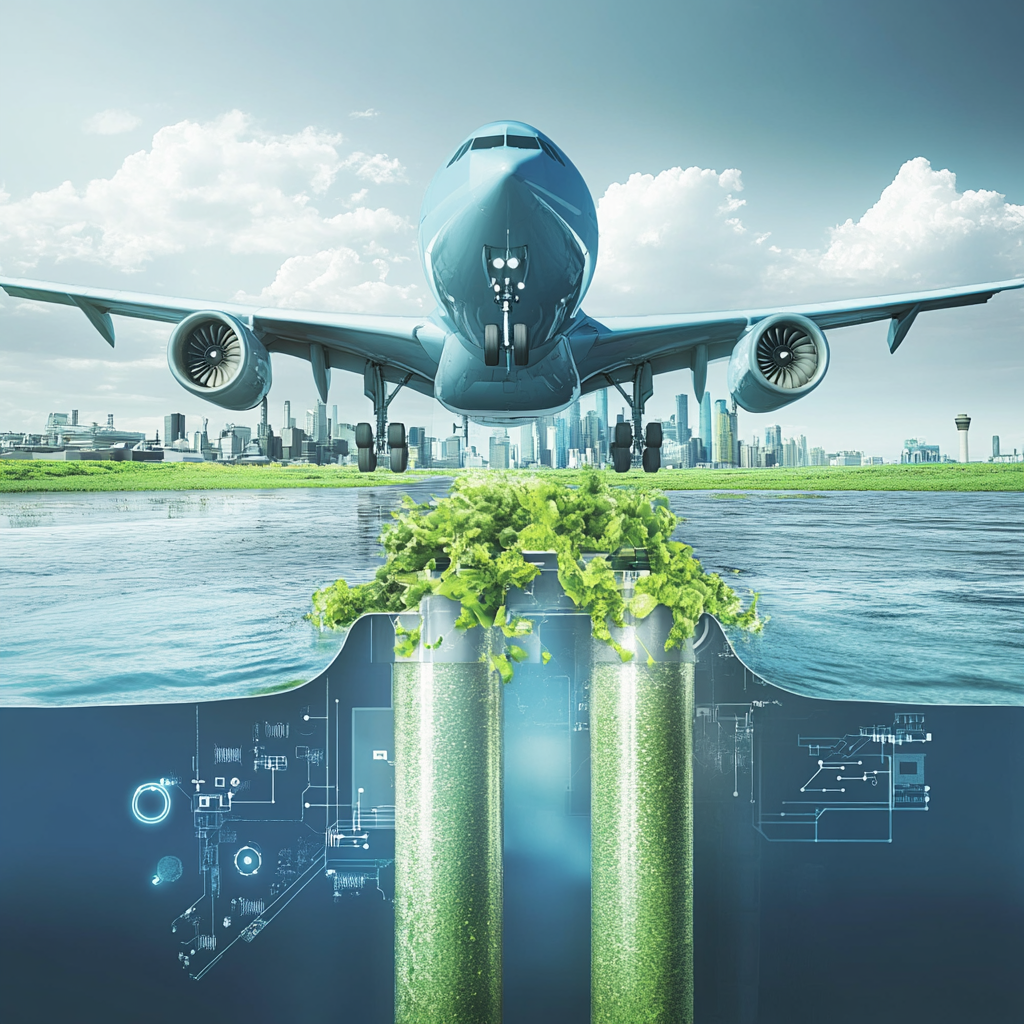
Revolutionary Wastewater Conversion: Transforming Aviation Fuel and Cutting Emissions by 70%
In aviation, a genuine revolution is brewing, and it's coming from a rather unexpected source: wastewater. Yes, you heard that right! Scientists over at the Argonne National Laboratory have taken the plunge into uncharted territories, bringing us the shining beacon of hope known as sustainable aviation fuel (SAF) derived from wastewater. This cutting-edge advancement doesn’t just tickle the fancy of tech enthusiasts but serves up an answer to one of the most pressing challenges of our time—greenhouse gas emissions from aviation. Buckle up, because we’re about to take a thrilling ride into the world where waste becomes fuel, and the skies can become a little bit clearer.
Now, let’s not beat around the bush here. The aviation sector isn’t exactly a poster child for sustainability. Responsible for about 3% of global greenhouse gas emissions, the industry has been flying high on fossil fuels, leaving a rather hefty carbon footprint in its wake. Despite the glorious vision of SAF dancing in the imaginations of environmentalists and engineers alike, getting it into widespread use has been akin to herding cats. High costs, limited supply, and a slew of technical hiccups have stood between us and cleaner flying. But hold onto your seats! The introduction of the new Methane Arrested Anaerobic Digestion (MAAD) technology could very well be the game-changer we’ve all been waiting for.
So, what is this MAAD technology, and why is it being hailed as the Holy Grail of sustainable aviation? Grab your lab coats, folks, because it’s time to talk tech. In essence, MAAD transforms high-strength organic wastewater—think what you’d find at breweries or dairy farms—into volatile fatty acids (VFAs). Surprise, surprise! Oh, the irony of turning what is often regarded as an unsightly byproduct into a promising source of clean energy. A membrane-assisted bioreactor steps in to enhance VFA production, which then goes through a series of chemical wizardry—ketonization and hydrodeoxygenation reactions—that turn those VFAs into the coveted hydrocarbons needed for aviation fuel. Voilà! Waste is no longer just waste; it’s fuel!
Now, you might be wondering about where this magical VFA comes from. Well, it’s all about looking in the right trash can. Breweries and dairy farms, often struggling with how to handle their carbon-rich wastewater, find themselves sitting on a gold mine, so to speak. Instead of sinking money into energy-robbing disposal methods, they can now transform that burden into jet fuel. One could argue that this is not just recycling; it’s a full-on makeover.
When it comes to the environmental and economic impacts, MAAD technology shows up like a superhero in a cape. With the potential to reduce aviation greenhouse gas emissions by a staggering 70%, it’s not just a drop in the bucket; it’s an entire ocean of change. The aviation sector isn't just sitting pretty, either. It’s estimated that SAF will have to account for 65-70% of the emission reductions needed to meet the industry's ambitious 2050 goal of net zero emissions. And amidst this green revolution, Argonne’s techno-economic analysis finds that the costs of producing this new SAF are competitive—yes, you heard it—against conventional jet fuel. Ah, sweet irony!
Dreaming big, the folks at the Argonne National Laboratory aim to ramp up SAF production to an astonishing three billion gallons by 2030, with the ambitious hope of meeting 100% of commercial jet fuel demand by 2050. Can you imagine? Commercial airliners powered entirely by waste-derived jet fuel soaring through the skies! It’s like something out of a science fiction novel, except it’s happening right now.
The beauty of this technology lies in its adaptability. Using a smorgasbord of waste-based feedstocks opens the doors to scaling up production, not just in the U.S. but globally. This could be the transformative moment aviation has been waiting for, helping us all take a deep breath of relief as we traverse the skies. Parents will no longer need to worry about the environmental impact of taking their children on that long-awaited vacation.
Of course, while MAAD shines bright, it’s not the only star in the vast universe of sustainable aviation innovations. The CirculAir platform from LanzaTech and LanzaJet is another bright light, converting waste carbon and renewable power into SAF. It’s like giving carbon a second chance at life, turning it into CarbonSmart™ ethanol, which gets a second transformation into jet fuel through LanzaJet’s Alcohol-to-Jet technology. Not to be outdone, this process promises a reduction in aviation emissions by at least 85%, and depending on the feedstock, it could even go carbon-negative! Talk about a green revolution!
Then there’s the microbial conversion of organic waste. Picture tiny superheroes in the form of microbes that break down waste to produce carboxylic acids, which are subsequently transformed into hydrocarbons with the help of commercially available catalysts. This procedure holds the potential to achieve net negative greenhouse gas emissions by thwarting the natural route of methane emissions that arise when waste is sent to landfills. It’s truly a fantastic feat of microbial mastery.
Bringing it all together, the emergence of technologies that turn wastewater and other waste streams into sustainable aviation fuel signifies a leap forward in our battle against climate change. These innovations detoxify the aviation industry, making strides toward ensuring we can continue to fly while also caring for the planet. The aviation sector may not have been the easiest nut to crack when it came to decarbonization, but it seems we’re getting closer with every innovative breakthrough.
So, there we have it—a whirlwind tour through a world where wastewater transforms into jet fuel and where aviation might finally gain some green wings. As we turn our eyes to the skies, we must keep pushing for innovations that will lead us into a sustainable future, not just in aviation but across all industries.
Want to stay up to date with the latest news on sustainable aviation fuel and other cutting-edge technologies? Subscribe to our Telegram channel: @channel_neirotoken for the latest updates and insights. Together, let’s keep this revolution soaring high!
